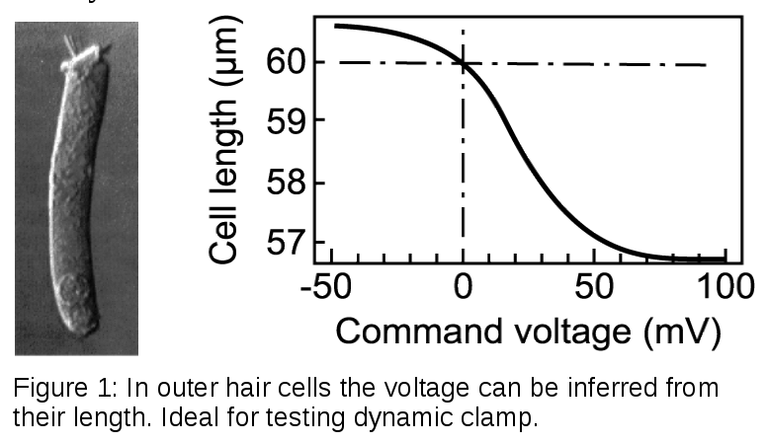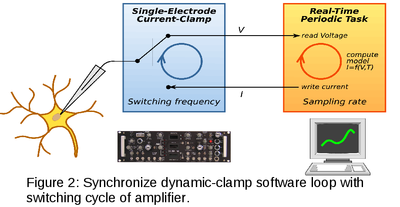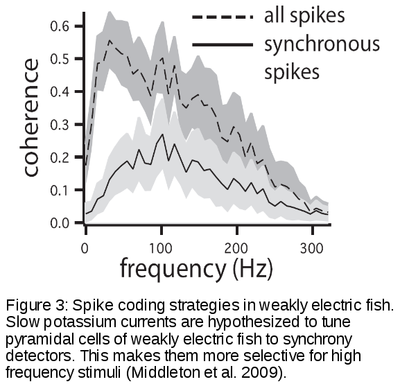Project A2 – Dissecting the role of ionic currents in object localization using an advanced dynamic-clamp system
The dynamic clamp is a powerful closed-loop technique for intracellular recordings that allows one to introduce artificial membrane conductances into real neurons. Recent studies demonstrate that both a better electrode compensation and higher sampling rates than traditionally used are crucial for optimal performance [1]. This suggests that dynamic clamp systems need to be improved and systematically tested in their performance. A potentially interesting test bed are outer hair cells from the mammalian inner ear (figure 1). Their membrane contains prestin, a unique piezoelectric protein, that converts the transmembrane voltage into an electromotile force at rates exceeding 90 kHz [2].
that dynamic clamp systems need to be improved and systematically tested in their performance. A potentially interesting test bed are outer hair cells from the mammalian inner ear (figure 1). Their membrane contains prestin, a unique piezoelectric protein, that converts the transmembrane voltage into an electromotile force at rates exceeding 90 kHz [2].
Therefore, outer hair cells offer the unique possibility to monitor injected electrical signals by measuring length changes. We will use the dynamic clamp to investigate cellular aspects of prey localization and communication in the electrosensory system of weakly electric fish in vivo [3]. Already at the second synapse the spatial receptive field sizes and temporal filter properties are tuned differentiall y for parallel processing of prey or communication signals. We have shown that slow potassium (SK) channels are a candidate for explaining these differences in tuning the neurons to either integrators or synchrony detectors [4]. Using the improved dynamic clamp system we will test this hypothesis.
y for parallel processing of prey or communication signals. We have shown that slow potassium (SK) channels are a candidate for explaining these differences in tuning the neurons to either integrators or synchrony detectors [4]. Using the improved dynamic clamp system we will test this hypothesis.
Objectives and description of the project
We will develop an advanced dynamic clamp system that synchronizes the switching cycles of an npi SEC amplifier with the dynamic clamp software loop (figure 2). This amplifier has unmatched electrode compensation capabilities [5], which will make dynamic clamping available for sampling rates >40 kHz. We then plan to rigorously check the system in simulations and by exploring the cellular basis of the transfer functions of outer and inner hair cells (figure 1). Second, to investigate the role of the SK c hannels in forming a representation of the position of prey objects we will perform in vivo intracellular recordings in weakly electric fish (figure 3). Using the new dynamic clamp system the SK conductances will be modified and their dynamical role in turning the pyramidal neurons form integrators to coincidence detectors will be investigated.
hannels in forming a representation of the position of prey objects we will perform in vivo intracellular recordings in weakly electric fish (figure 3). Using the new dynamic clamp system the SK conductances will be modified and their dynamical role in turning the pyramidal neurons form integrators to coincidence detectors will be investigated.
[1]: Preyer and Butera IEEE Trans Neural Syst Rehabil Eng 2009. [2]: Frank et al. PNAS 1999. [3]: Benda et al. Neuron 2006. [4]: Middleton et al. J Neurophysiol 2009. [5]: Polder and Swandulla J Neurosci Methods 2001.

